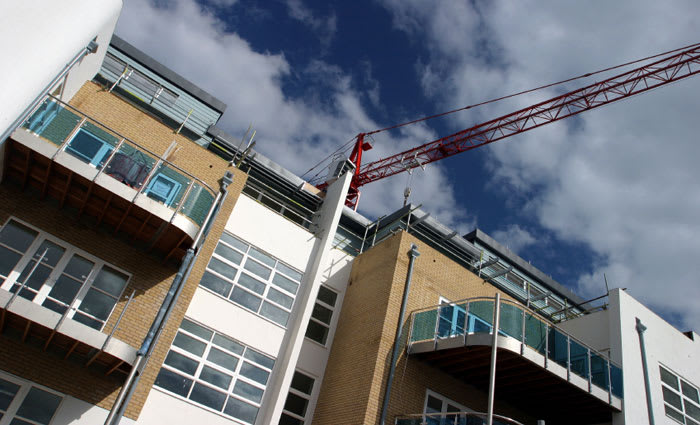How a building inspection report could save you tens of thousands of dollars: Edwin Almeida
GUEST OBSERVATION
When we think about building inspection reports (BIR), we often refer to a report that is conducted and only relevant to older homes.
Older homes are sometimes referred to as secondary stock (SS), dwellings that have been up for more than just a few years. I believe it’s time to rethink a critical part of the property purchasing strategy in general.
In light of current construction trends and more to the point, the emergence of fly-by-night builder and developers; it is prudent that a purchaser obtains a professional pest and building inspection report (PBIR).
The following points could save you tens of thousands of dollars.
- Just because it is “new and shiny” does not mean that it was well built
The relaxed building codes, as previously reported, when coupled with bad workmanship, adds to the inferior quality of finished construction. The following is a summary of a building report conducted of a townhouse development in the Sydney suburb of Homebush, where the town house values reached $950,000.
The inspection report identified over 100 defects. Again, I point out that the home being inspected was newly constructed. The report was a building report carried out as a “pre-settlement report”.
The background of the complex itself highlights some very interesting information. The development company is a newly established company. The majority of the sales in the complex were made to overseas investors that had not seen the property to date, and were relying on their “buyers agents/advocates”, to guide them on their purchase.
I spoke to the building inspector and asked about the person he represented. The purchaser was a local resident that wanted to buy something new, and in this particular location. He bought early in the piece and due to being local, felt he could keep an eye on the progress of the development.
Much to his surprise, as the development progressed and he had the opportunity to talk to the trades-people on site and the builder, he became more and more dismayed with their building practices. Although being a novice, he was able to see and talk to some of the tradespeople on site who raised several concerns.
Now nearing settlement, and not convinced of the quality of construction, the purchaser decided to engage “David” to conduct a pre-settlement or hand over inspection report. The report showed over 100 defects.
When the developer was questioned on these issues, the response via the selling agent was words to the effect: “If he doesn’t wish to settle, he can have his deposit… we have other buyers interested in the property.”
- Where to from here?
It will not be a surprise for similar stories to arise over the next six to 12 months. The three main reasons for the rise in shoddy construction I see are: fly-by-night property developers, the building codes not keeping up with the strong rise in urban development and the use of new materials and building methods not being properly tested by the course of time.
However, regardless of how you and I view the deficiencies and raise concerns through legal avenues and consumer rights, whilst the property market remains as hot as it was in 2014, our voices will pale in comparison to the noise generated by the current appetite for new development in Sydney where the higher influence is the foreign dollar.
It is however shameful that what was recognised as one of the best and toughest building standards in the world which Australia had, is diminishing in stature. Perhaps it’s time that the relevant authorities conducted more spot checks, as opposed to purely relying on private certification.
- Take action don’t rely on preconceived notions
It is, however, important to take personal action when accepting a new property once completed. Don’t be persuaded by the agent nor the vendor that you don’t need a building inspection just because it is new.
Do not be persuaded by the selling agents or marketing companies that tell you that the ongoing remedy for building issues will be taken care by the owner’s corporation (OC). At the end of the day, even this argument is flawed; you are part of the OC so you will pay for it in part.
Common areas may be less burdensome to fix as all owners chip in, but ultimately defects in your lot (property/unit) will not necessarily be taken care by the OC. You may have to bear the entire costs of repairs.
Once you accept the property, it is harder to enforce any legal obligations on the builder to rectify any substandard workmanship, specifically to the inside of your unit/townhouse. You have limitations of time to have issues fixed internally and can you just imagine having trades people trampling through your home day in, day out after you just spent a million dollars to buy a new property?
Some may say “better the devil you know”; this is true in construction when buying into highrise apartment blocks that have had ample time to settle and the major issues dealt with.
However, we should not be punished if we ourselves make a decision to buy a new home. To better safeguard yourselves in the purchase, appoint a property lawyer to act for you in regards to the conveyancing.
I am one to believe that developers and builders fear lawyers more than do conveyancers, when dealing with off the plan purchases and newly built property. This will assist in hedging the likelihood of being misled by a developer and safeguard you against major investing regrets, the purchase ‘hangover-regrets’ that tends to keep people awake at night.
EDWIN ALMEIDA is licensee in charge of Just Think Real Estate.
He is also the creator of Oz Real Estate.TV and a presenter for propertyinvestingvault.com.
